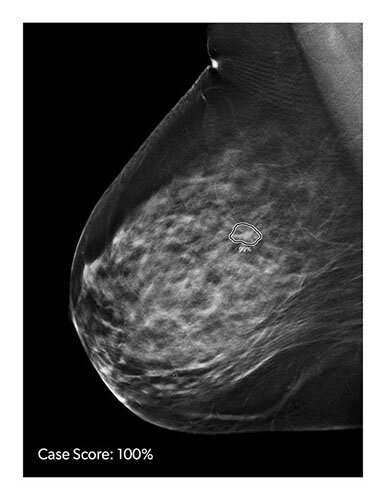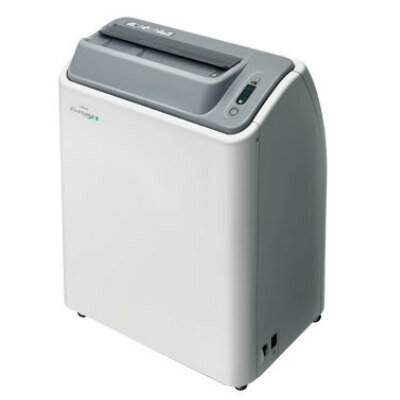Siemens Launches its Fastest, Single-Source CT Scanner, Somatom X.ceed
|
By MedImaging International staff writers Posted on 16 May 2021 |

Image: Somatom X.ceed (Photo courtesy of Siemens Healthineers)
Siemens Healthineers (Erlangen, Germany) has launched Somatom X.ceed, a new high-resolution, high-speed CT (computed tomography) scanner engineered specifically for the most challenging clinical areas where time and precision are of essence.
To support medical staff in their workflows during critical situations, two "companions" for automated user guidance are integrated: myExam Companion guides users through diagnostic procedures; myNeedle Companion supports targeted needle path planning as well as laser-guided insertion across multiple modalities. With the intelligent support of myExam Companion, staff members can easily unlock the full potential of Somatom X.ceed, speeding up procedures from patient preparation to image evaluation. Applications powered by artificial intelligence provide ready to read results aimed to facilitate diagnostic tasks. In emergency imaging, myExam Companion plays a major role in guiding the user towards more standardized results and low dose levels.
With myNeedle Companion, Siemens simplifies the workflow in minimally invasive treatments. myNeedle Companion is a unique combination of hardware and software designed to greatly reduce the complexity in CT guided interventions. In addition, it is the first universal solution with a harmonized user interface for the planning and guidance of percutaneous needle procedures across imaging modalities, be it for a CT or an angiography system. Once the workflow is trained on one modality, the training efforts on another modality are expected to be much shorter. This can help to reduce unwarranted variations and minimize training efforts. Familiar user interfaces let the radiologist concentrate on what matters: accurate needle positioning with the help of the unique myNeedle Laser: a powerful, fully integrated option that projects the needle entry point and insertion angle directly on the body of the patient – even in advanced double-angulated procedures with multiple needle paths.
With its large bore of 82 centimeters and its user-friendly tablet operation, Somatom X.ceed is designed from the ground up to enhance user and patient experience, two of the top three department priorities. The system’s power and fast rotation time can use their full potential thanks to the intelligent automation of myExam Companion, achieving high-speed and high spatial resolution, key for cardiac, emergency, and spectral imaging. As a result, the fastest single-source CT scanner from Siemens can assist healthcare providers with their clinical decisions especially well in areas like emergency imaging, cardiac CT, and CT-guided interventions, all of them growing clinical fields.
“As the number and complexity of radiological procedures increase, demands on staff are reaching heightened levels. This continues to cause unwarranted variation, in both diagnostic and interventional procedures. Somatom X.ceed, together with myNeedle Companion, is a true game changer for CT-guided interventions. After the introduction of myExam Companion last year, reducing the overall complexity of scanner operation in as many aspects as possible was our next logical step,” said Philipp Fischer, Head of Computed Tomography at Siemens Healthineers.
To support medical staff in their workflows during critical situations, two "companions" for automated user guidance are integrated: myExam Companion guides users through diagnostic procedures; myNeedle Companion supports targeted needle path planning as well as laser-guided insertion across multiple modalities. With the intelligent support of myExam Companion, staff members can easily unlock the full potential of Somatom X.ceed, speeding up procedures from patient preparation to image evaluation. Applications powered by artificial intelligence provide ready to read results aimed to facilitate diagnostic tasks. In emergency imaging, myExam Companion plays a major role in guiding the user towards more standardized results and low dose levels.
With myNeedle Companion, Siemens simplifies the workflow in minimally invasive treatments. myNeedle Companion is a unique combination of hardware and software designed to greatly reduce the complexity in CT guided interventions. In addition, it is the first universal solution with a harmonized user interface for the planning and guidance of percutaneous needle procedures across imaging modalities, be it for a CT or an angiography system. Once the workflow is trained on one modality, the training efforts on another modality are expected to be much shorter. This can help to reduce unwarranted variations and minimize training efforts. Familiar user interfaces let the radiologist concentrate on what matters: accurate needle positioning with the help of the unique myNeedle Laser: a powerful, fully integrated option that projects the needle entry point and insertion angle directly on the body of the patient – even in advanced double-angulated procedures with multiple needle paths.
With its large bore of 82 centimeters and its user-friendly tablet operation, Somatom X.ceed is designed from the ground up to enhance user and patient experience, two of the top three department priorities. The system’s power and fast rotation time can use their full potential thanks to the intelligent automation of myExam Companion, achieving high-speed and high spatial resolution, key for cardiac, emergency, and spectral imaging. As a result, the fastest single-source CT scanner from Siemens can assist healthcare providers with their clinical decisions especially well in areas like emergency imaging, cardiac CT, and CT-guided interventions, all of them growing clinical fields.
“As the number and complexity of radiological procedures increase, demands on staff are reaching heightened levels. This continues to cause unwarranted variation, in both diagnostic and interventional procedures. Somatom X.ceed, together with myNeedle Companion, is a true game changer for CT-guided interventions. After the introduction of myExam Companion last year, reducing the overall complexity of scanner operation in as many aspects as possible was our next logical step,” said Philipp Fischer, Head of Computed Tomography at Siemens Healthineers.
Latest Industry News News
- Bayer and Google Partner on New AI Product for Radiologists
- Samsung and Bracco Enter Into New Diagnostic Ultrasound Technology Agreement
- IBA Acquires Radcal to Expand Medical Imaging Quality Assurance Offering
- International Societies Suggest Key Considerations for AI Radiology Tools
- Samsung's X-Ray Devices to Be Powered by Lunit AI Solutions for Advanced Chest Screening
- Canon Medical and Olympus Collaborate on Endoscopic Ultrasound Systems
- GE HealthCare Acquires AI Imaging Analysis Company MIM Software
- First Ever International Criteria Lays Foundation for Improved Diagnostic Imaging of Brain Tumors
- RSNA Unveils 10 Most Cited Radiology Studies of 2023
- RSNA 2023 Technical Exhibits to Offer Innovations in AI, 3D Printing and More
- AI Medical Imaging Products to Increase Five-Fold by 2035, Finds Study
- RSNA 2023 Technical Exhibits to Highlight Latest Medical Imaging Innovations
- AI-Powered Technologies to Aid Interpretation of X-Ray and MRI Images for Improved Disease Diagnosis
- Hologic and Bayer Partner to Improve Mammography Imaging
- Global Fixed and Mobile C-Arms Market Driven by Increasing Surgical Procedures
- Global Contrast Enhanced Ultrasound Market Driven by Demand for Early Detection of Chronic Diseases
Channels
Radiography
view channel
Novel Breast Imaging System Proves As Effective As Mammography
Breast cancer remains the most frequently diagnosed cancer among women. It is projected that one in eight women will be diagnosed with breast cancer during her lifetime, and one in 42 women who turn 50... Read more
AI Assistance Improves Breast-Cancer Screening by Reducing False Positives
Radiologists typically detect one case of cancer for every 200 mammograms reviewed. However, these evaluations often result in false positives, leading to unnecessary patient recalls for additional testing,... Read moreMRI
view channel
PET/MRI Improves Diagnostic Accuracy for Prostate Cancer Patients
The Prostate Imaging Reporting and Data System (PI-RADS) is a five-point scale to assess potential prostate cancer in MR images. PI-RADS category 3 which offers an unclear suggestion of clinically significant... Read more
Next Generation MR-Guided Focused Ultrasound Ushers In Future of Incisionless Neurosurgery
Essential tremor, often called familial, idiopathic, or benign tremor, leads to uncontrollable shaking that significantly affects a person’s life. When traditional medications do not alleviate symptoms,... Read more
Two-Part MRI Scan Detects Prostate Cancer More Quickly without Compromising Diagnostic Quality
Prostate cancer ranks as the most prevalent cancer among men. Over the last decade, the introduction of MRI scans has significantly transformed the diagnosis process, marking the most substantial advancement... Read moreUltrasound
view channel
Deep Learning Advances Super-Resolution Ultrasound Imaging
Ultrasound localization microscopy (ULM) is an advanced imaging technique that offers high-resolution visualization of microvascular structures. It employs microbubbles, FDA-approved contrast agents, injected... Read more
Novel Ultrasound-Launched Targeted Nanoparticle Eliminates Biofilm and Bacterial Infection
Biofilms, formed by bacteria aggregating into dense communities for protection against harsh environmental conditions, are a significant contributor to various infectious diseases. Biofilms frequently... Read moreNuclear Medicine
view channel
New SPECT/CT Technique Could Change Imaging Practices and Increase Patient Access
The development of lead-212 (212Pb)-PSMA–based targeted alpha therapy (TAT) is garnering significant interest in treating patients with metastatic castration-resistant prostate cancer. The imaging of 212Pb,... Read moreNew Radiotheranostic System Detects and Treats Ovarian Cancer Noninvasively
Ovarian cancer is the most lethal gynecological cancer, with less than a 30% five-year survival rate for those diagnosed in late stages. Despite surgery and platinum-based chemotherapy being the standard... Read more
AI System Automatically and Reliably Detects Cardiac Amyloidosis Using Scintigraphy Imaging
Cardiac amyloidosis, a condition characterized by the buildup of abnormal protein deposits (amyloids) in the heart muscle, severely affects heart function and can lead to heart failure or death without... Read moreGeneral/Advanced Imaging
view channel
New AI Method Captures Uncertainty in Medical Images
In the field of biomedicine, segmentation is the process of annotating pixels from an important structure in medical images, such as organs or cells. Artificial Intelligence (AI) models are utilized to... Read more.jpg)
CT Coronary Angiography Reduces Need for Invasive Tests to Diagnose Coronary Artery Disease
Coronary artery disease (CAD), one of the leading causes of death worldwide, involves the narrowing of coronary arteries due to atherosclerosis, resulting in insufficient blood flow to the heart muscle.... Read more
Novel Blood Test Could Reduce Need for PET Imaging of Patients with Alzheimer’s
Alzheimer's disease (AD), a condition marked by cognitive decline and the presence of beta-amyloid (Aβ) plaques and neurofibrillary tangles in the brain, poses diagnostic challenges. Amyloid positron emission... Read more.jpg)
CT-Based Deep Learning Algorithm Accurately Differentiates Benign From Malignant Vertebral Fractures
The rise in the aging population is expected to result in a corresponding increase in the prevalence of vertebral fractures which can cause back pain or neurologic compromise, leading to impaired function... Read moreImaging IT
view channel
New Google Cloud Medical Imaging Suite Makes Imaging Healthcare Data More Accessible
Medical imaging is a critical tool used to diagnose patients, and there are billions of medical images scanned globally each year. Imaging data accounts for about 90% of all healthcare data1 and, until... Read more


















